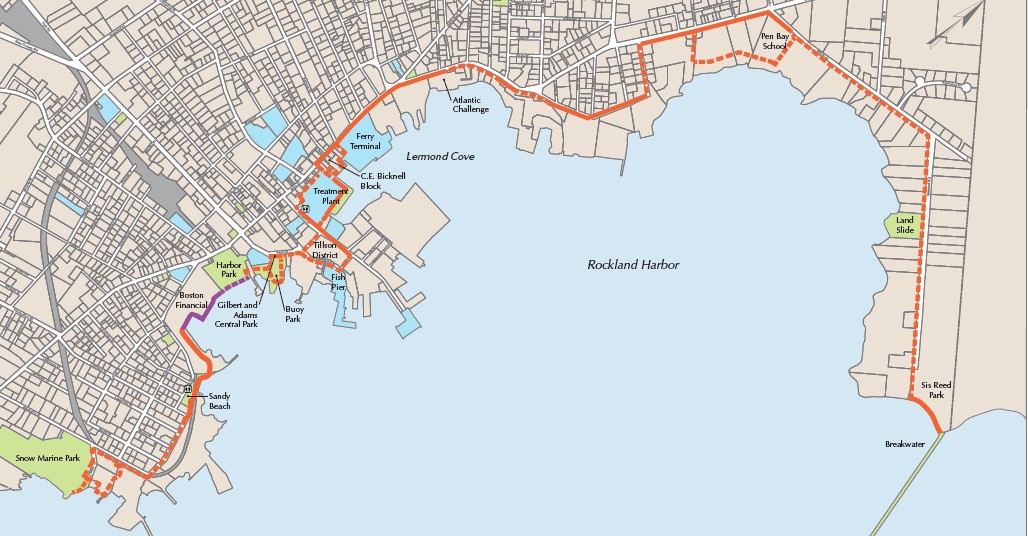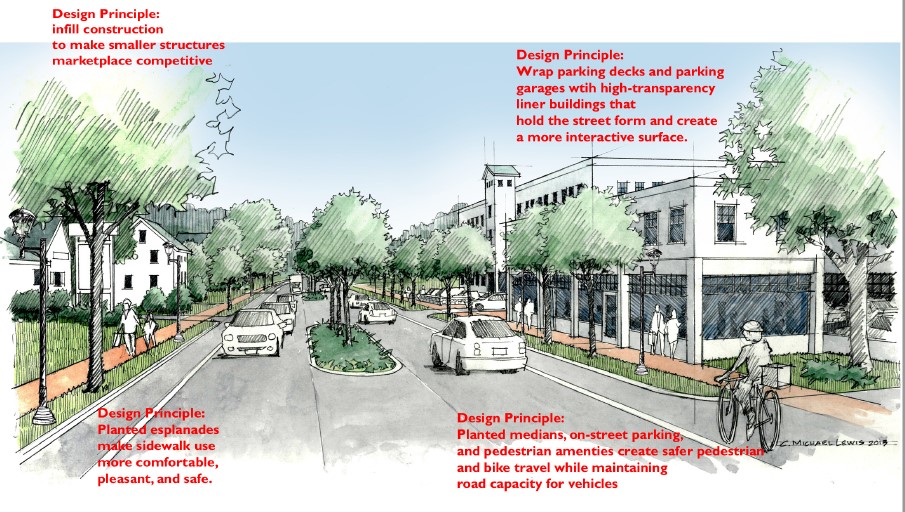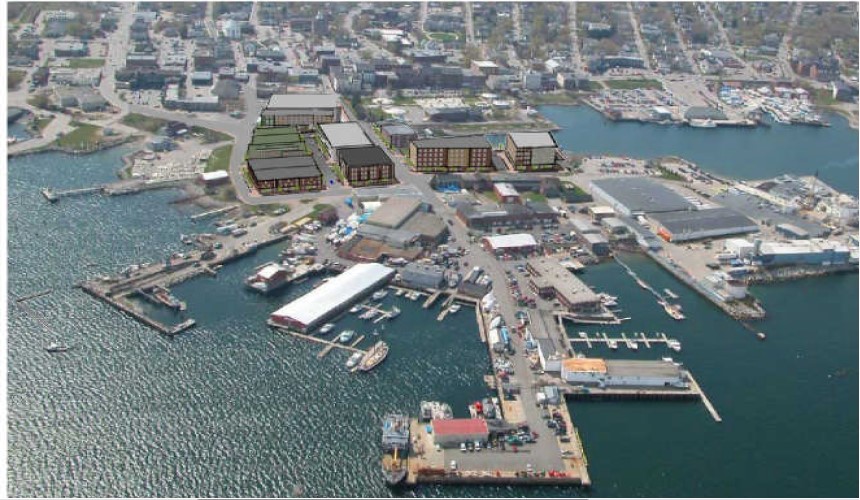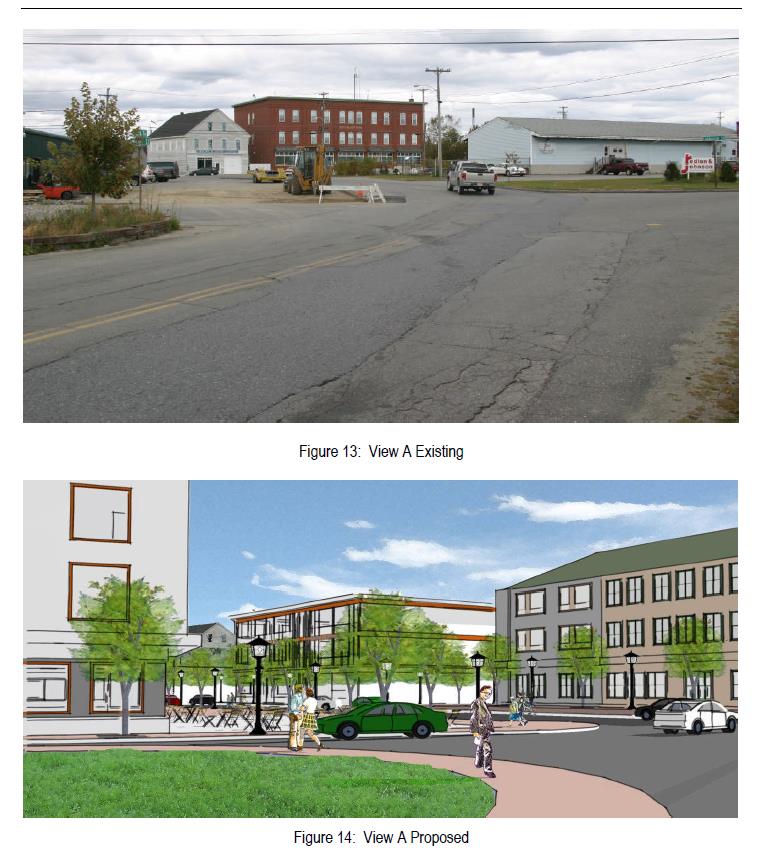As much as the City is and should be a thriving place for business it should also be a thriving place to live, work and play. The Economic & Community Development Department works on a variety of community projects and programs to promote the City and improve the well-being of its residents. This includes encouraging the development of infrastructure and facilities and seeking resources and community investments to build a sustainable future.
Learn more about:
Housing
The City of Rockland recognizes the important role housing stock plays in vibrant, inclusive and sustainable neighborhoods. We support affordable housing that allows elders to remain in the homes and neighborhoods they know and programs and partnerships that encourage home ownership and rehabilitation to allow the next generation of residents to own and modernize older homes. Affordable housing is both a balance to economic development, ensuring that workers can find housing and that rising prices don't displace residents and a tool for redeveloping distressed neighborhoods and preventing the loss of value in surrounding properties.
Housing Programs, Development & Grants
Rockland’s Housing Rehabilitation Program provides grants and/or loans which help low-moderate income residents fix up their homes. First preference is given to low-moderate income first home buyers or elderly residents. The full program guidelines and application can be found here:
For general rehabilitation, a maximum amount of $15,000 per home/unit is available and an additional $10,000 per home/unit is available for abatement of hazardous substances, particularly lead paint, or for weatherization and energy efficiency upgrades.
How to Apply?
If you are interested in applying, please determine if you are income eligible:
| Family Size | Maximum Income |
|---|---|
| 1 | $34,851 |
| 2 | $39,801 |
| 3 | $44,801 |
| 4 | $49,751 |
| 5 | $53,751 |
| 6 | $57,751 |
| 7 | $61,701 |
| 8 | $65,701 |
If you determine your income level qualifies you to participate in this program you can apply by sending the following to CED@rocklandmaine.gov:
- A completed Housing Rehabilitation Program Application
- A quote and or project description of the work that will be performed with the funding
- Proof of income (previous years’ tax returns or last 4 paystubs)
Rockland is committed to working in partnership with private and not-for-profit housing developers to support projects that will strengthen Rockland’s housing stock. We urge housing developers to consult with our office early so we can you find resources that match your project.
There are a number of resources available for homeowners who need assistance including the following:
- Penquis Home Repair Network : http://www.penquis.org/
- USDA Rural Development: https://www.rd.usda.gov/me
- Maine State Housing Authority: http://www.mainehousing.org/
Community Infrastructure Projects
The Department is involved in a number of projects to rehabilitate or redevelop City infrastructure in order to improve amenities and quality of life for residents and attract year round visitors.
The idea for a 5 mile walking trail, extending from the Rockland Breakwater to Snow Marine Park, has existed for over 20 years. Through the hard work and dedication of members of the Harbor Trail Committee, as well as generous donations from residents and businesses, the trail has come to life foot by foot.

The Harbor Trail will be an unbroken 5 mile-long pedestrian route connecting Snow Marine Park to Sis Reed Park and the Breakwater pathway. It will provide public access to views of Rockland Harbor, and complement ongoing efforts to revitalize Rockland’s downtown, while utilizing public land and infrastructure to the greatest degree possible. Along its approximately 5 miles of length, the Harbor Trail already takes the form of an asphalt sidewalk, a paver sidewalk, a paver pathway, a concrete pathway, and a wooden boardwalk. Its numerous twists and turns are designed to follow the shoreline and take advantage of existing infrastructure.
The following is a list of Harbor Trail projects currently underway or recently completed:
Mechanic Street Segment
Through a grant from provided by the Maine Recreation Trails Program the City of Rockland was able to construct a segment of Harbor Trail extending from Snow Marine Park to Atlantic Street. There were a lot of challenges in building this section of the trail due to the proximity to railroad tracks. However, this section of Harbor Trail provides an important connection to Snow Marine Park.
Atlantic Street Segment
The Rockland Public Services Department is testing out a new method of constructing segments of sidewalk and trail on the Atlantic Street segment of Harbor Trail. This new method involves stamping concrete with patterns and colors. The City is using this project as a way to test this new method in addition to building a vital linkage between the Mechanic Street and Sandy Beach segments of Harbor Trail.
Lindsey Brook Bridge
Through a generous anonymous donation a pedestrian bridge was constructed over Lindsey Brook, adjacent to Lermond Cove, that creates an important linkage between the Ferry Terminal Park and South Lermond Cove Harbor Trail pathway.
North Lermond Cove Pathway
Through easements provided by property owners on Main Street a pathway will be built that connects the Lindsey Brook Bridge (and North Lermond Cove Pathway) to the Ferry Terminal Park. The development of this pathway will result in 2 unbroken miles of trial that extends along Rockland’s Harbor.
A conceptual design for the City’s downtown waterfront provides a vision for a future that is more resilient to changing sea levels and storm surges, better connects the Downtown Waterfront with Rockland’s Downtown, and redevelops public spaces in support of becoming a walkable and sustainable community. Click to learn more.
For almost three decades the Rockland Fish Pier has proven to be a vital facility for fisherman, fuel transport, transient herring carriers, seasonal aquaculture harvesters (sea urchins and seaweed), local island residents, ground fishing vessels, buyers, and smacks. This facility provides vital waterfront access and support services for fishermen and other marine industries up and down the midcoast as well as an effective platform to bring buyers and sellers together.
This facility enables more than 100 working men and woman to operate in their trade while also offering parking and a secure area for gear repair. The Rockland location of this facility is easily accessible to local repair facilities, parts suppliers and groceries for island residents.
Given the age of the pier, it is understandably in need of major rehabilitation work to address deck and structural issues that are typical of similar facilities at this stage of life. Accordingly, improvements to Fish Pier will allow the city to preserve the asset, better maintain and maximize the pier's current footprint and operate at a more efficient level. <Insert Picture of Fish Pier>
Community Planning Projects
Rockland’s Economic and Community Development Department is involved in a number of planning projects that involve a range of land use and development plans and other area-specific and issue-specific plans and special studies.
The City of Rockland has developed a number of plans for specific areas. The goal of these plans is to lay out a vision for the development/redevelopment of these areas and determine the appropriate infrastructure, land use and private sector investment required to implement these plans.
The Redevelopment Plan ideal build-out reflects a context sensitive revitalization approach including recommendations for pedestrian and vehicular mobility, the integration of mixed-uses, civic space, urban architecture / form, street patterns and the role of the working waterfront in the economy and culture of Rockland. The main aspects of the redevelopment plan include:
- Establishing a new street grid that preserves and frames existing and new water view sheds and corridors while establishing more defined street intersections.
- Creating a grid / block system that fundamentally corresponds to ownership patterns, but utilizes a traditional downtown grid system to maximize the overall potential value of the properties.
- Maintains all existing open spaces and pedestrian amenities, but like traditional downtowns, the street (street space) is activated as a primary civic space integrating the car and the pedestrian in a safe manner.
- Utilizes the form and scale of the buildings to replicate historic downtown patterns. The buildings are not “freestanding” in a suburban mode, but are part of a street wall helping to define the civic street space.
- Integrates uses rather than segregating compatible uses. The Redevelopment Plan envisions that new buildings will have commercial, retail and restaurant space on the first and second floors and residential uses on the third floors and above.
The Camden Street (Rockland) / Commercial Street (Rockport) corridor was evaluated for redesign based on a Complete Streets approach to traffic improvements such as roundabouts, bike lanes, shared lanes, on-street parking and planted medians, as well as pedestrian amenities such as crosswalks, curb bump-outs, site furnishings, esplanades, and mid-block alleys and open space pathways.

The overall objective of the Camden Street initiative is to:
- Change perceptions of the area
- Beautify the area
- Create economic opportunity for redevelopment
- Plan for the long term
- Evaluate economic viability and feasibility for redevelopment
- Enhance the gateways to downtown and the City of Rockland
- Enhance real estate values to support the city services provided
- Dilute highway focus without diminishing capacity by building a civilized street that enriches the experiences of all users of the corridor including pedestrians, vehicles, bicycles and transit
- Reinforce mixed use including residential, commercial and recreational uses
- Enhance all networks including wildlife, stormwater, transit, and pedestrian linkages, etc.
- Plan for future generations



